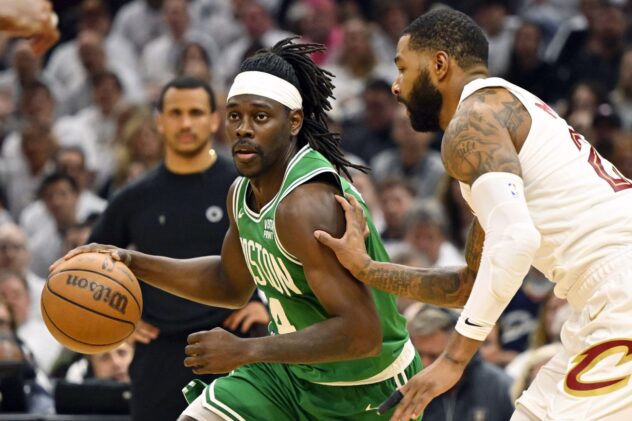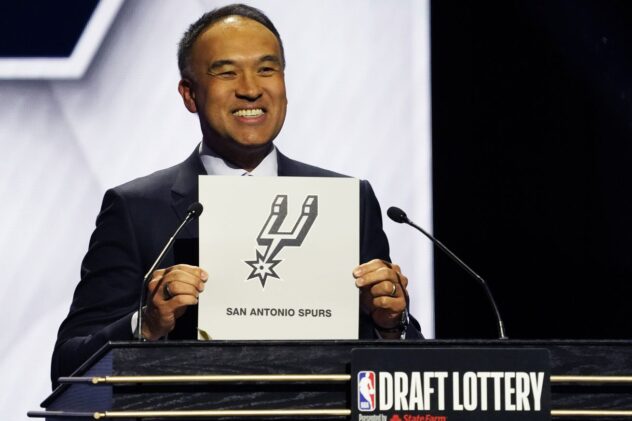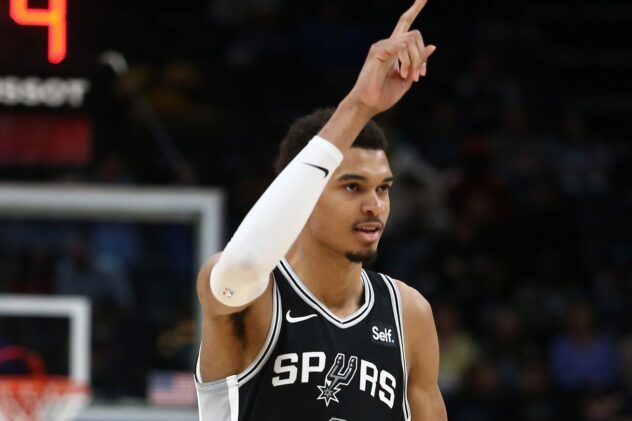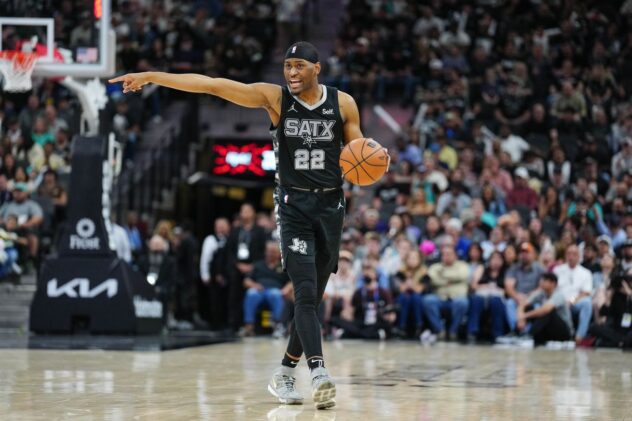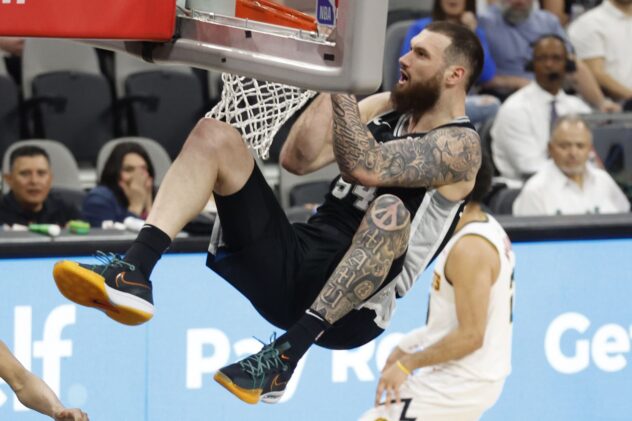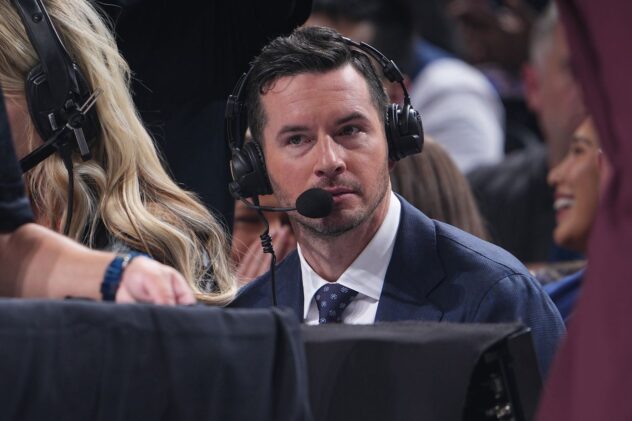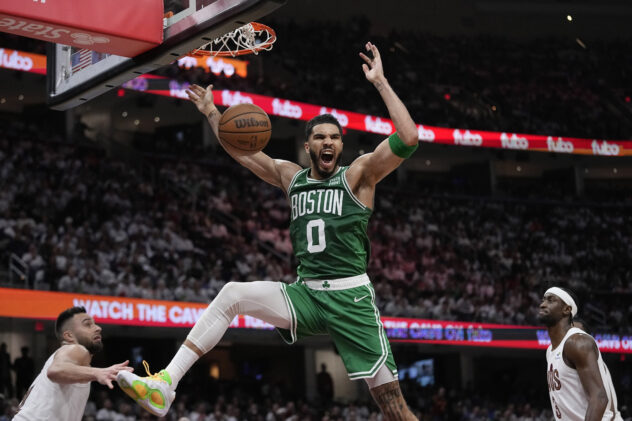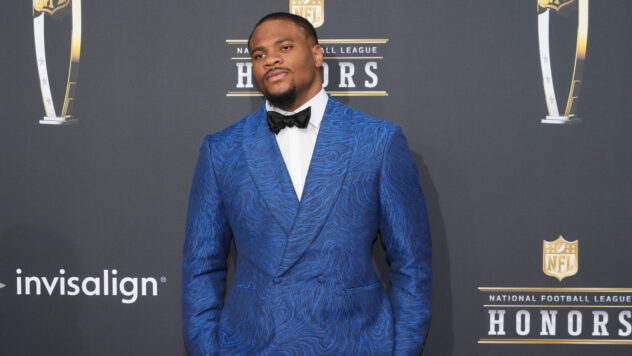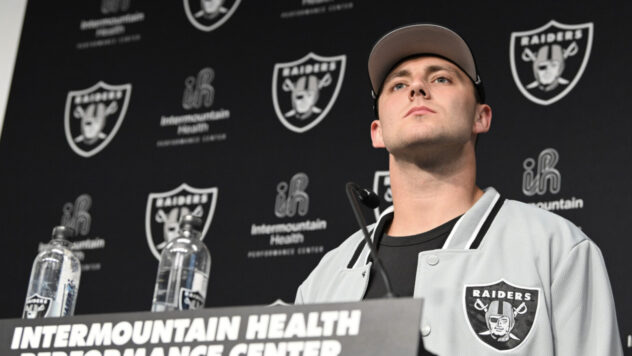The Dejounte Murray Project has just begun

In ways good and bad, Murray was a statistical anomaly in his first year as the Spurs’ starting point guard.
When Tony Parker learned of his move to the bench, he said he was told “it was time.” And it was — not only for the 35-year-old to take on a more limited role, or for the Spurs to accelerate his understudy’s development, but for PATFO to get a clearer idea of what they had in the long, athletic prospect who played a total of 322 minutes in his rookie season. Thus, less than a week after shutting Kawhi Leonard down indefinitely, the Spurs fast-tracked the Dejounte Murray Project.
Has anyone talked about how cool this play was? Murray races over to Gasol like he’s gonna screen, spins around to the basket and skies high to finish Anderson’s lob.
(I know it’s the Suns but still) pic.twitter.com/cz9lhUXzDN
— Bruno Passos (@bouncepassos) February 10, 2018
Murray’s first turn as a full-time starter included moments of promise and frustration — when he took the ball downhill, you rarely knew what would come of each hungry stride. In interviews, he carried himself like a young man fully aware of where he stood on his arc to stardom. He was LeBron James’ #StriveForGreatness mantra incarnate, a walking motivational soundbyte who backed it up every night with dogged effort and vocal leadership on the floor. But those same performances also highlighted the incongruities in his game.
Statistically speaking, Murray distributed the ball like a shooting guard, rebounded like a power forward, and shot threes like a center. The aggregate production was undeniably that of an NBA player, but what kind he’ll become remains unclear after year two. Let’s review what we know:
The league has never seen a point guard like Dejounte Murray
This isn’t hyperbole. The disparity in Murray’s rebounding and playmaking production put him in a class all his own. Look up all the guards — not just point guards; guards — in their first three seasons in the NBA that played rotation minutes and averaged more than 9 rebounds and less than 5 assists per 36. Murray is the only one. And that’s not factoring in his singular defensive impact for his position (good) or struggles shooting the ball (bad).
This is all to say, there are few, if any, blueprints for his development. That will force the team to once again account for his strengths and weaknesses with the other four players that he shares the floor with.
Murray’s defense is already great and can get better
As the year came to a close, Murray’s name was thrown around in All Defense discussions, and there’s good reason why. The Spurs gave up 98.1 points per 100 possessions with Murray on the floor over the regular season, the best defensive rating among all San Antonio rotation players. He also led all NBA point guards in ESPN’s defensive RPM and was even third on the team in defensive rebound rate, as he used all seven feet of his wingspan to crash the glass.
Does it help that he played the majority of his minutes with Kyle Anderson, Danny Green, and LaMarcus Aldridge? Probably, but the eye test backs up what a lot of what the advanced stats say. Murray battled over screens, disrupting potential hand-offs and recovering well, got in passing lanes without gambling, and was quick and smart when closing out on shooters. He also devoured every lazy pass in sight.
It’s probably safe to say the All Defense talk will only increase from here.
Let’s talk about the shooting
In defending Murray’s underwhelming shooting against the nine or so people who live in his mentions, the San Antonio Express-News’ Jeff McDonald compared his numbers to those of a young Parker:
For reference …
Tony Parker’s shooting percentage at age 21: 44.7 percent.
Dejounte Murray’s shooting percentage at 21: 44.3 percent.— Jeff McDonald (@JMcDonald_SAEN) April 27, 2018
It’s a helpful taste of perspective, but also a bit misleading. At 21, Parker was the team’s number-two offensive option and made 62 threes on 31.2% shooting, before finding his sweet spot a few steps inside the arc and still scoring at the rim at an extremely efficient rate. Murray made 26.5% of his fairly open 34 attempts (32.5% on 40 if you count the postseason), was below-average around the rim, and had significantly less defensive attention to deal with. He ended his second season with splits of 44.3-26.5-70.9, shooting 35.2% on shots beyond 8 feet and 41.4% on floaters, perhaps his most reliable offensive move.
Further down, Murray’s strengths may tilt more towards shooting off the dribble or playing off ball and firing away. For now, it’s a wash: he shot 32.8% on pull-up jumpers and 31% on catch-and-shoot jumpers. This could be a question of more reps, or a tweak in mechanics, and the main perspective to maintain is that he is still just 21. Either way, Murray has the tutelage of shot doctor Chip Engelland to count on. That’s a good thing for any young player, but especially one with his ambition and work ethic.
Things would come easier for Murray were he a better finisher in the paint. His speed and long strides make it easy for him to carve consistent paths to the basket, and his height and length should facilitate finishing over or around defenders. But for the second year in a row, he was below-average (51.1%) at the rim, and it’s hard to find one particular area to work on.
Sometimes these things just come down to instincts, and being so slight of build certainly doesn’t help.
Too many times, he looked for contact only to gather mid-air and release a low-percentage shot on his way down.
But Murray can still get better at knowing when to attack, how to open up space, what angles to take around the rim, and make his athleticism work better for him. That should happen with time.
The playmaking needs work, too
Murray finished the year with averages of 2.9 assists and 1.7 turnovers per game. The low assists are predominantly a reflection of the truncated role he had in the Spurs system, but the team would’ve loved to have someone who could routinely create off the dribble or in the pick and roll. Murray thus far is not adept at either, and got most of his assists off simple pick and pops with Aldridge or Gasol. When he went off script, bad things tended to happen:
The offensive curriculum for Murray was clear on most nights: simple screen actions, typically low enough that defenders could not simply duck under them, and make good reads. His results hitting the roll man were sometimes good…
… and other times not so good…
/cdn.vox-cdn.com/uploads/chorus_asset/file/10754429/ezgif_2_ead6a1e200.gif)
It’s worth retaining Parker’s services in some capacity solely for his tutelage with pocket passes, an invaluable tool for any point guard but especially one with Murray’s limitations as a pull-up shooter.
Of course, every criticism laid out here should come with an age disclaimer. (In case anyone missed it before: he is only 21.) But Murray is also one of the Spurs’ most valuable assets and a player they will presumably build around in the coming years. That makes these strengths and weaknesses important now, even if they’re both subject to change as he continues to strive for greatness.
Source: Pounding The Rock

